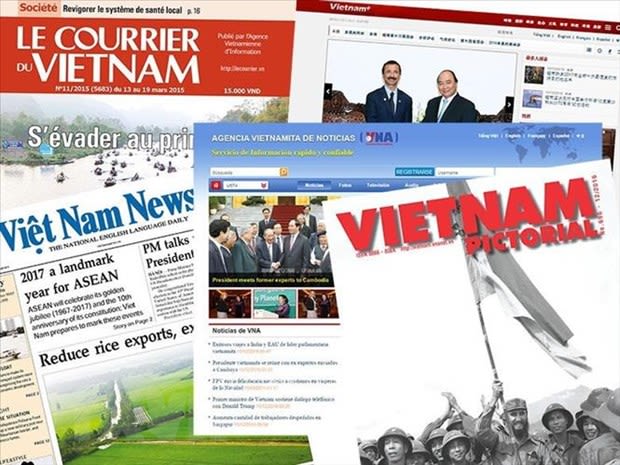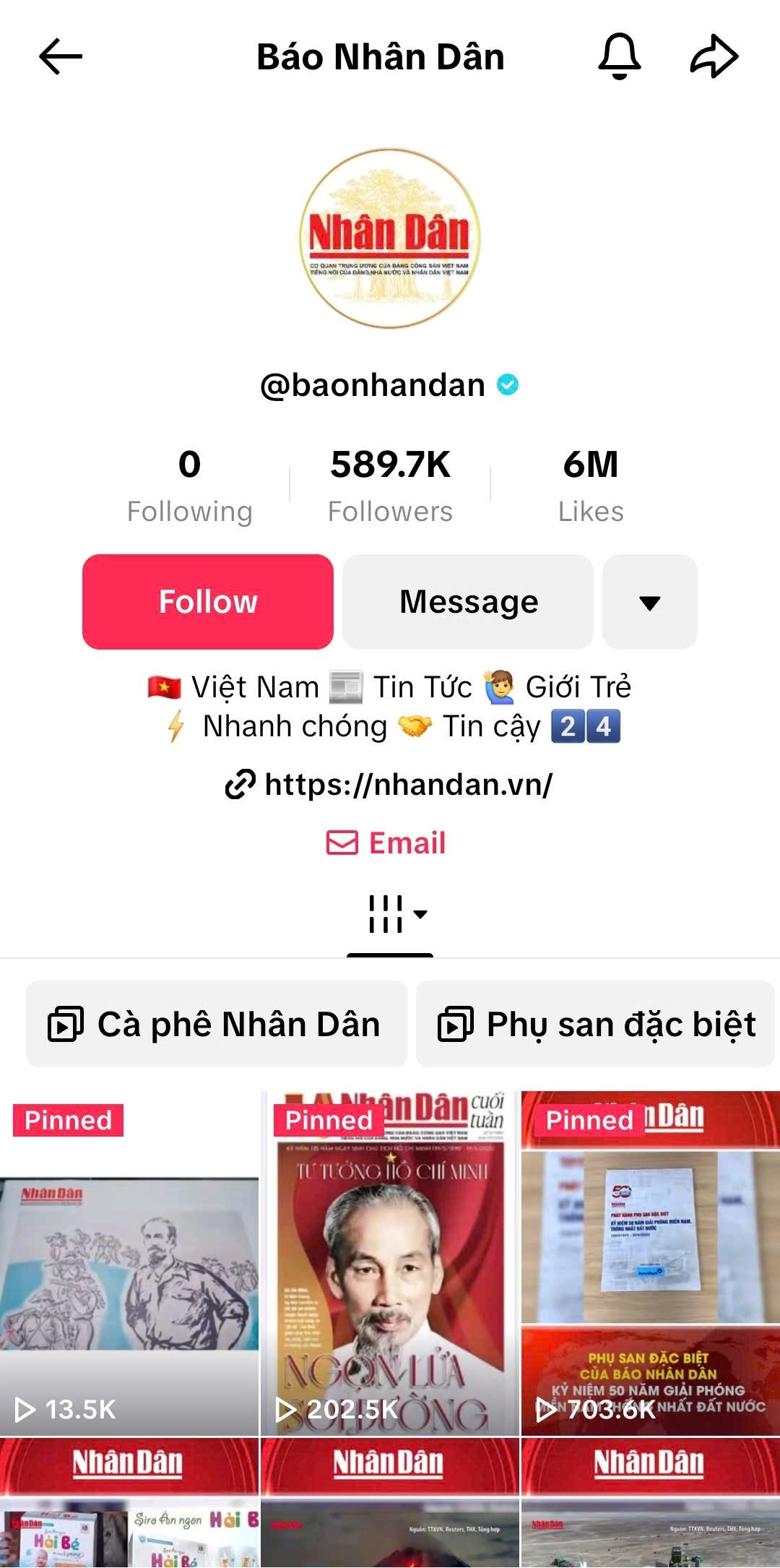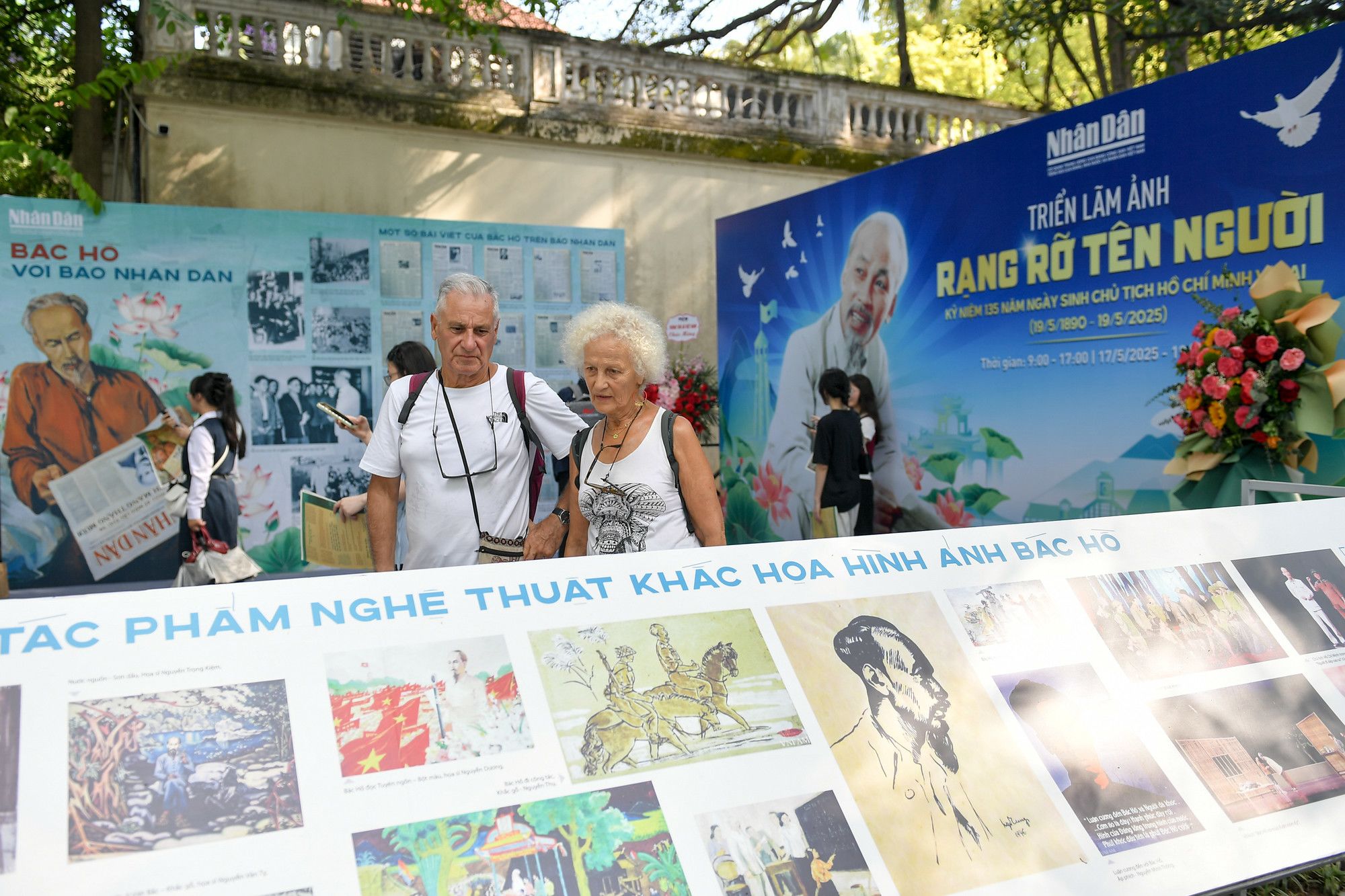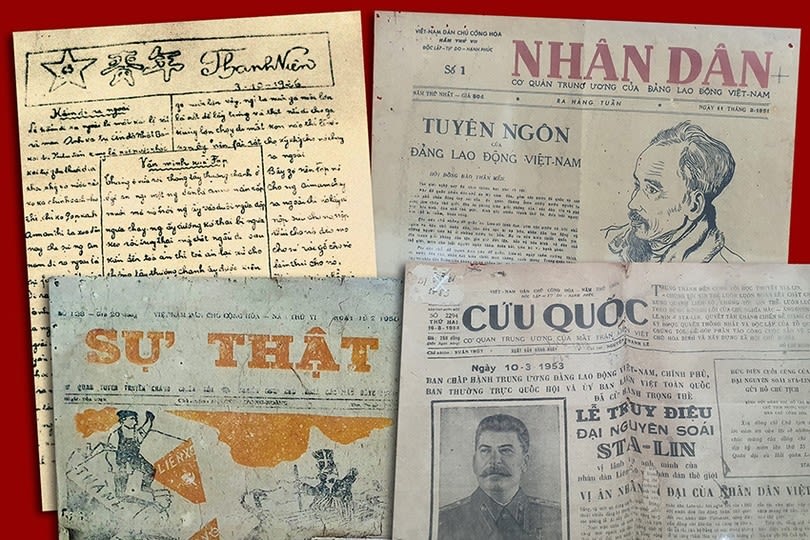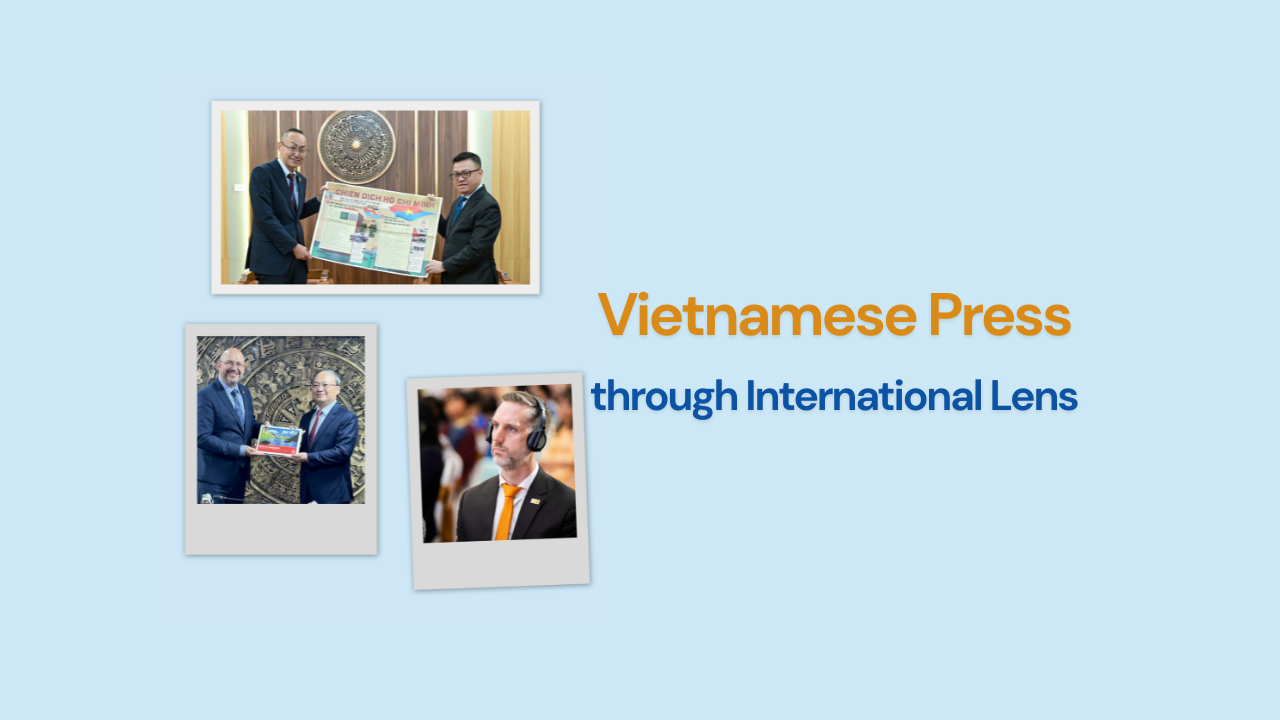External Relations Press in Digital Age

In 2024, amid the overwhelming flow of information related to the 50th anniversary of the Dien Bien Phu Victory, readers across the country were surprised by a uniquely styled supplement. Not because of its volume, but because of the way it “spoke” to the reader: by scanning a QR code on each page, smartphones displayed short films on the Dien Bien Phu Campaign — not merely reenactments of history, but emotional journeys.
This was the Panorama Supplement on the Dien Bien Phu Campaign by Nhan Dan Newspaper — the first Vietnamese print media product to win the 2024 Sustainable Print Innovation and Development Award presented by the World Association of News Publishers (WAN-IFRA). This story is considered as a small snapshot reflecting a larger movement: Vietnamese press finding new ways to tell Viet Nam’s story to the world — vividly, technologically, and with emotional impact.

When media boundaries are blurred
The rise of digital technology has not only transformed the tools for transmitting information but also reshaped international audiences’ perspectives, understanding, and approach to a nation. In this flow, external relations press plays a “hinge” role, acting as a guide, a gatekeeper, and a constructor of Viet Nam’s image.
If the 20th century witnessed the historic role of revolutionary newspapers in voicing Viet Nam to the world during wartime, then the 21st century poses a completely new challenge for the press: how to ensure that Viet Nam is not lost in the vast ocean of global information.
In this context, the space for external relations communication has expanded like never before. With just a mobile device and an internet connection, any content about Viet Nam — from foreign policy to a bowl of Ha Noi pho (noodles served with beef or chicken in a hot bowl of broth) — can be accessed, shared, and spread worldwide. But precisely because of this, the accuracy, timeliness, and persuasiveness of the press have become vital factors.
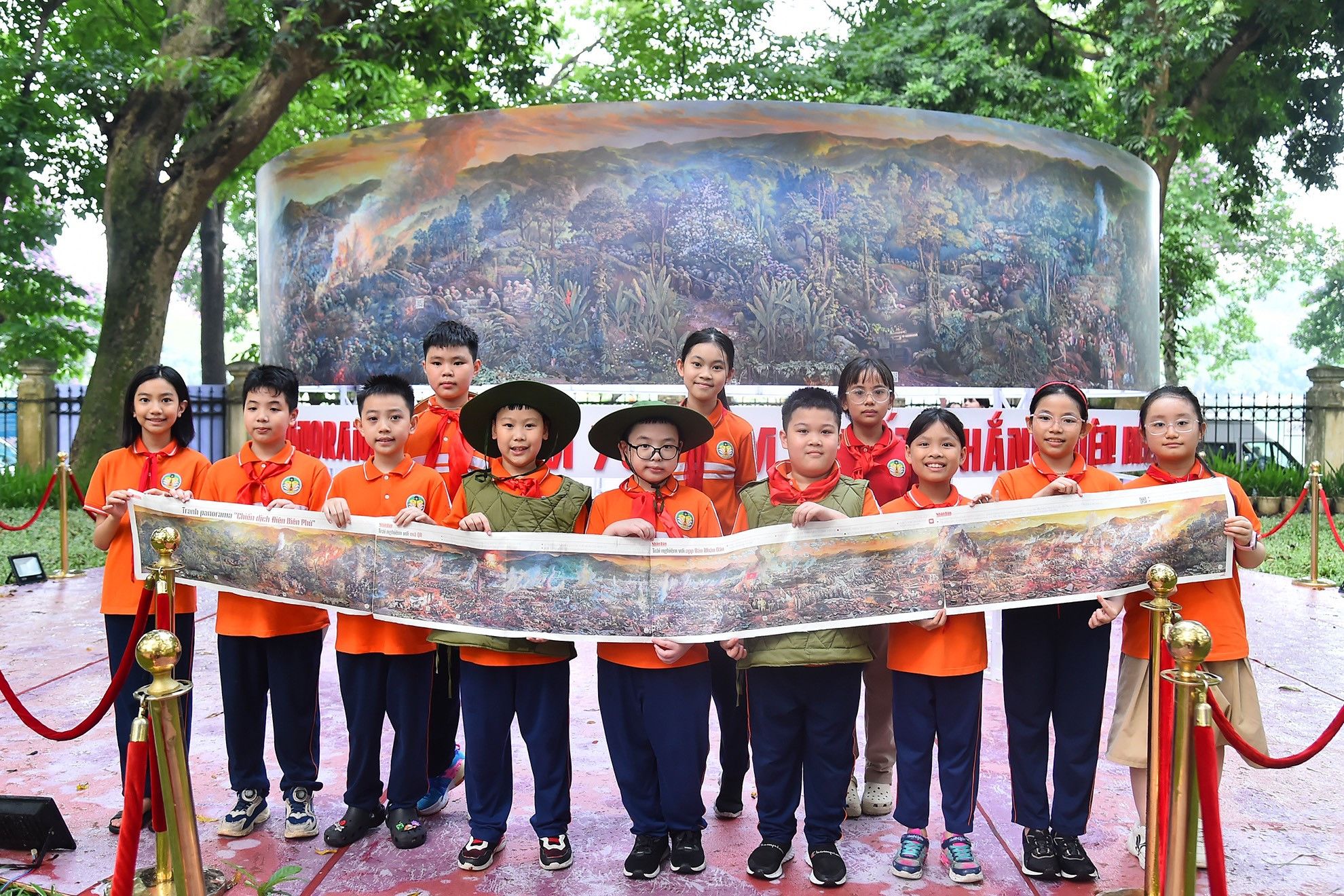
Entering the digital era, with information technology and social media developing at lightning speed, Viet Nam’s external relations press is no longer simply a tool of propaganda but has become an active force shaping national image.
Today’s press not only expands the scope of information dissemination but also accelerates its reach, enhances interaction with international audiences, and affirms its position as a cultural bridge, an information gatekeeper, and a frontline in the ideological, cultural, and international communication sphere.
Foreign-language newspapers in English, French, Chinese, Russian, Spanish, etc. published by major media agencies in general, and by Nhan Dan Newspaper in particular, have pioneered innovation, becoming well-invested, strategic, and creative journalistic products.
Foreign print and online newspapers of Vietnam News Agency. (Photo: VNA)
Foreign print and online newspapers of Vietnam News Agency. (Photo: VNA)
Multimedia platforms such as videos, podcasts, interactive graphics, and livestreams have helped external relations information transcend mere text, becoming an immersive experience.
Innovation leads the way
There is a reality: mainstream media is facing a paradox — doing things correctly often takes time; doing them quickly may lead to errors. Meanwhile, social media, with its decentralised nature, instant feedback, and powerful crowd effect, has gained the upper hand in shaping public opinion.
Research shows that young people often encounter news for the first time through social media, particularly TikTok and Instagram. This raises the question: have external press agencies truly “caught up” to enter the digital space where their audience resides?
It cannot be denied that a portion of current external relations press content still heavily leans on slogans, lacking depth and human emotion. Meanwhile, young people — true global citizens — are not persuaded by formality, but rather by authentic, heartfelt stories with diverse perspectives. They are not impressed by grand rhetoric, but by sincerity.
From a behind-the-scenes video of the Vietnamese women’s football team overcoming injuries to reach the World Cup, to the start-up story of an ethnic minority youth in Ha Giang Province by producing organic agricultural goods, or an emotional short news segment, these are simple fragments that can touch the hearts of global viewers. This is the kind of external relations information that carries real weight because it conveys real life and real people.
Nhan Dan's TikTok channel
Nhan Dan's TikTok channel
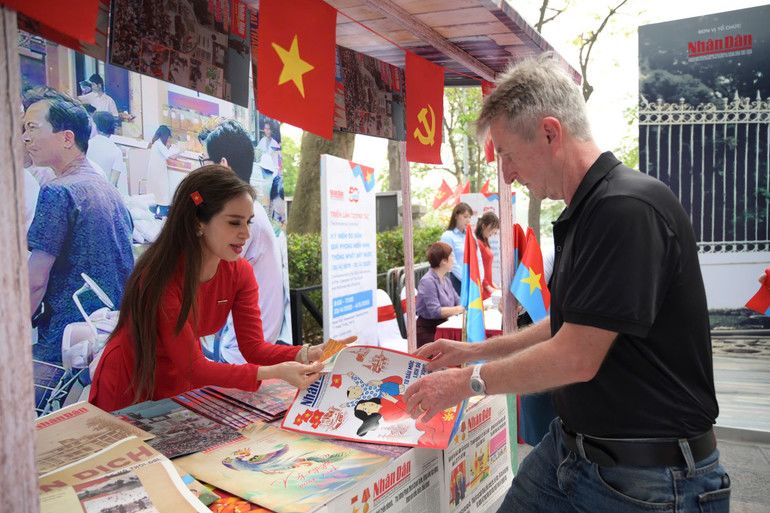
Alongside content, technological challenges are also significant. Many press agencies are still struggling with digital transformation. The use of AI, Big Data to personalise content, forecast reader trends, or build multi-platform journalism models has not been uniformly applied. Meanwhile, globally, some media outlets now allow users to interact with news reports using voice commands or even choose their preferred news anchors.
In Viet Nam, Nhan Dan Newspaper is one of the pioneers in integrating technology into external relations communication. Currently, Nhan Dan Newspaper publishes editions in English, French, Russian, Chinese, and Spanish to serve external relations communication, contributing to spreading Viet Nam’s official voice to the world.
The launch of panorama supplements using augmented reality (AR) and virtual reality (VR) as well as the development of digital exhibitions on historical milestones has opened new directions for delivering information to the public in a vibrant, creative, and more relatable manner, particularly appealing to younger audiences. This is not merely a visual upgrade, but a statement of engagement — a readiness to evolve in order to spread values.
The photo exhibition related to President Ho Chi Minh held in the open space of Nhan Dan Newspaper’s headquarters facing Hoan Kiem Lake, attracts international visitors. (Photo: NDO)
The photo exhibition related to President Ho Chi Minh held in the open space of Nhan Dan Newspaper’s headquarters facing Hoan Kiem Lake, attracts international visitors. (Photo: NDO)
Recently, on the 50th anniversary of the Liberation of the South and National Reunification, Nhan Dan Newspaper organised an interactive exhibition integrating advanced technology, simultaneously applying three techniques: 3D mapping light projection, augmented reality (AR), and virtual reality (VR).
In the “field tent” area, 3D mapping technology was used for the first time to project images of the Ho Chi Minh Campaign directly onto printed newspapers. The six-minute experience gave viewers a vivid sense of the historic moment when the Independence Palace was seized. This model is expected to be introduced to schools to support visual history education.
With AR technology, readers can scan QR codes on the newspaper to view short videos simulating four key moments of the campaign. Meanwhile, VR technology, utilising the “StoryMap” platform, allows users to take virtual tours of historical landmarks such as the Independence Palace, offering realistic experiences even to those who have never set foot in Viet Nam.
In addition, the application of AI (artificial intelligence) and Big Data is being gradually implemented at Nhan Dan Newspaper as part of the comprehensive digital transformation of press, aiming to enhance external communication, optimise content, and personalise user experiences.
An English-dubbed video using AI technology on Nhan Dan’s English page.
An English-dubbed video using AI technology on Nhan Dan’s English page.
Nhan Dan Newspaper has trialled and applied AI to assist in translating content into English, French, Russian, Spanish, and Chinese for its foreign-language editions. This shortens editing time, speeds up publication, and expands international reach.
Several foreign-language pages of Nhan Dan Newspaper have used AI to generate selected video content, with automatic image insertion and subtitles, saving time and human resources while increasing engagement.
Amid the digital information flow, Nhan Dan Newspaper is asserting its pioneering role as an official media outlet, continuously innovating to adapt to the times and enhance the effectiveness of external communication using modern, creative, and human-centred tools.
Children have an opportunity to experience historical events and lessons in a new way. (Photo: NDO)
Children have an opportunity to experience historical events and lessons in a new way. (Photo: NDO)
However, for such innovations not to remain isolated “bright spots”, there needs to be a long-term strategy for external relations information in the digital age: from training media personnel with global thinking, technological fluency, digital skills, and foreign language competence, to clearly identifying content priorities — putting people at the centre of the story.
In an age where information boundaries have been erased, mainstream journalism cannot merely deliver news; it must become a creator of trust. Upholding standards without becoming outdated, conveying the truth without being dry; this is the greatest challenge, yet also the noblest mission of today’s external relations press.
Published: June 20, 2025
Content: Vu Anh, Tuyet Nhung, Bich Lien, Bich Van, Phuong Huyen
Design: Hoa Bui
